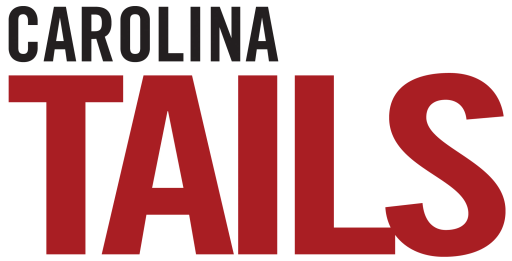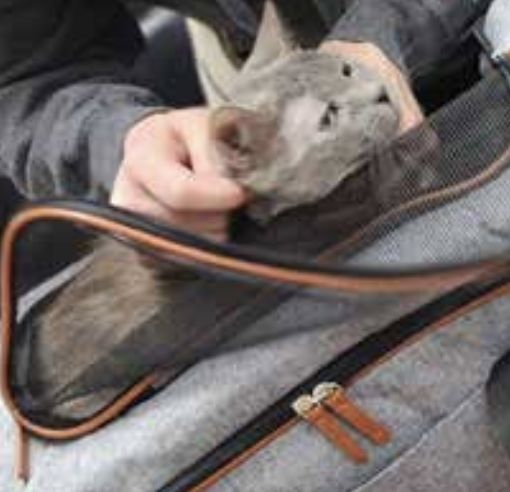Charleston Animal Society offers refuge to animals caught in recent hurricanes.
By Dan Krosse, Aldwin Roman and Abigail Kamleiter
Photos: Aldwin Roman, Kay Hyman, Abigail Kamleiter, Matt Chan
As Carolina Tails goes to print (later than usual because of the busy hurricane season), Charleston Animal Society has evacuated 446 animals out of harm’s way in Florida after Hurricane Irma made her wrath felt from the Caribbean to Charleston. The combined devastation of Hurricanes Irma and Harvey have created an unprecedented crisis for animal rescue organizations across the South. In response, Charleston Animal Society set up a “Rescue Pipeline.” CEO Joe Elmore explains how this roadway to safety works and how YOU can get involved.
Carolina Tails (CT): Tell us how the Evacuation Pipeline works.
Joe Elmore (JE): With so many organizations helping out with Hurricane Harvey’s destruction in Texas, that leaves us short of resources on the East Coast. So as HSUS and ASPCA are bringing animals up Interstate 75 (the west side of Florida), that pipeline so to speak, we’re concentrating on Interstate 95 (the east side of Florida) and creating a rescue pipeline and getting the animals out of there. We have reached out and helped Gainesville, Jacksonville, Daytona Beach and other areas.
CT: So, these homeless animals come to Charleston and then what happens?
JE: We rescue them to Charleston, and then we evacuate most of them up the East Coast to places like North Carolina, Virginia, Pennsylvania, New Jersey and even the Upstate.
CT: How can people help?
JE: People can come adopt some of these animals right from us, and that helps free us up and we can bring in more evacuees. The other way to help is by sponsoring an evacuation. It is heartwarming how people have been so generous in both ways.
CT: How much do evacuations cost?
JE: There are the carriers for the animals to be safely transported. At one evacuation, we had to leave 105 carriers with the organization. There is the fuel and associated costs of transporting all of these animals in trailers and vans. These costs are extremely expensive. We pay all the veterinarians and medical staff that we have treating some of these animals. Many of the animals came to us from shelters that had severe damage, and the only information we had on the animal was its name, so we vaccinate every animal as soon as we get it here. And then we start doing the veterinary assessments on those animals.
CT: Why is Charleston Animal Society taking on this challenge?
JE: How can we turn our head and not attempt to help when we know that we can? So that’s why we’re doing it. It’s that we have a disproportionate responsibility due to help, due to our capacity to help.
CT: And people have also helped Charleston in the past.
JE: Yes. Exactly. The last two years where South Carolina suffered a great deal with Hurricane Matthew and then the thousand-year flood, there were a number of organizations outside of our state that came to our aid and were able to save animals by evacuating our animals. This is one way we can give back.
CT: How proud are you of your staff and of this community?
JE: I’ve had so many things to be proud of regarding the response to these hurricanes. Our staff, volunteers and community. One example is that we were so overloaded with dogs over the weekend prior to a transport, so we put out a call for volunteers. We needed to exercise those dogs before their transport up north and we got an overwhelming response.
We have seen hundreds of people donate to our evacuation efforts. And for that we are very thankful. There is a lot to be proud of here in Charleston, we truly are a caring community.





